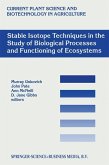Sulphur (S) plays a pivotal role in various plant growth and development processes being a constituent of sulphur-containing amino acids, cysteine and methionine, and other metabolites viz., glutathione and phytochelatins, co-factor of enzymes which contribute to stress repair and amelioration of heavy metal toxicity. Besides, a number of S-containing components are biologically active and, thus, a source for use as medicinal value. The basic global issue before the agricultural scientist and world community is to evolve cultivars and develop methodologies for efficient use of inputs to enhance agricultural productivity. This is particularly true of the developing countries which are going to see maximum rise in population with changing food demands and declining availability of land. Amongst the inputs, nutrients play a crucial role. The major requirement is for N, P and K followed by several micro-nutrients. In this context reports of world-wide S deficiency in the agriculturalsystems are relevant. The reasons are many. Broadly speaking reduction inS emission, use of S-free N, P and K fertilizers and higher biomass production contributed the maximum. Despite the need for sulphur as an essential plant nutrient and the substantial returns expected from its use, very little attention has been given to fill the gap between supply and demand of S.








